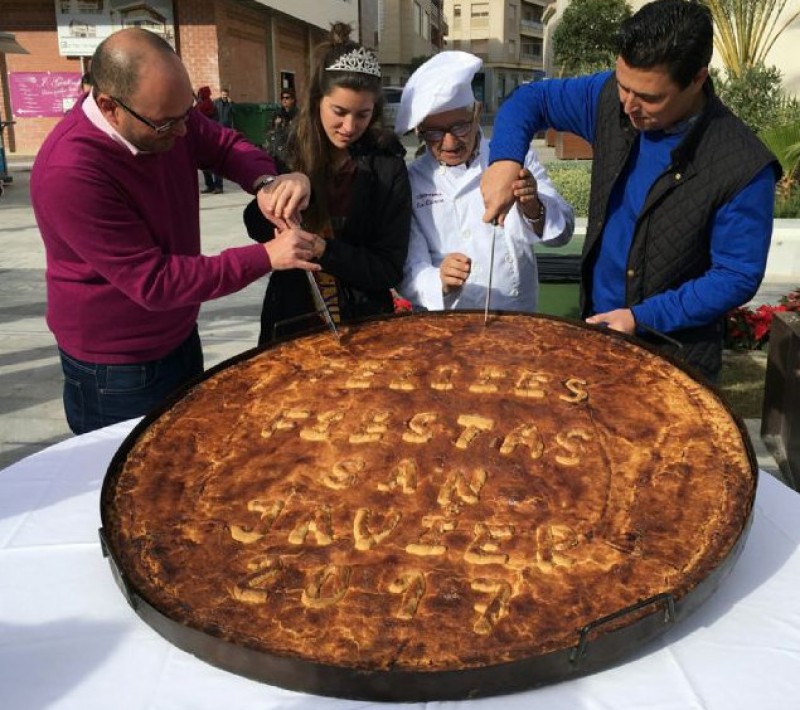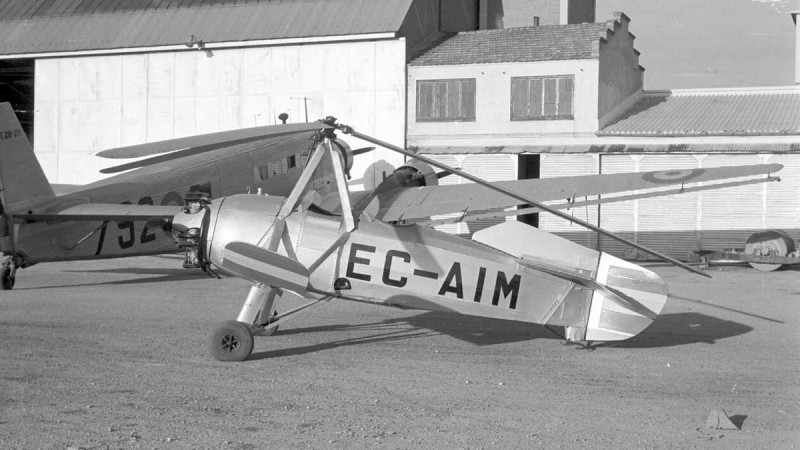- Region
- Vega baja
- Marina Alta
- Marina Baixa
- Alicante
- Baix Vinalopo
- Alto & Mitja Vinalopo
-
ALL TOWNS
- ALICANTE TOWNS
- Albatera
- Alfaz Del Pi
- Alicante City
- Alcoy
- Almoradi
- Benitatxell
- Bigastro
- Benferri
- Benidorm
- Calosa de Segura
- Calpe
- Catral
- Costa Blanca
- Cox
- Daya Vieja
- Denia
- Elche
- Elda
- Granja de Rocamora
- Guardamar del Segura
- Jacarilla
- Los Montesinos
- Orihuela
- Pedreguer
- Pilar de Horadada
- Playa Flamenca
- Quesada
- Rafal
- Redovan
- Rojales
- San Isidro
- Torrevieja
- Comunidad Valenciana
Discover the link between Corvera airport and a gastronomic speciality of San Javier!
The rival airports are connected through one of the most illustrious families in the modern history of Murcia
The January 10 2018 marks the 95th anniversary of one of the major achievements of Juan de la Cierva y Codorniú, a Murcia-born aviator of such renown that it has been proposed that the new airport in Corvera be named after him.
Born in 1895 to a wealthy family, (his grandfather Ricardo Codorniú was responsible for the re-forestation of the mountains of Sierra Espuña and the sand dunes which threatened to engulf the coastal town of Guardamar del Segura in the province of Alicante) he first began to explore flight while still a teenager, experimenting with gliders as early as 1912.
He studied engineering at the Escuela Especial de Ingenieros de Caminos, Canales y Puertos, gaining a degree in engineering after six years of study and producing a series of designs for aircraft prior to 1920 when he patented the first version of an autogyro.
On January 9 1923 the first successful flight of the C4 autogyro took place, the first aircraft of its kind (a kind of cross between an aeroplane and a helicopter which uses a rotor to develop lift and a propeller to provide thrust).
Having brought his design to the UK in 1925 to demonstrate at Farnborough to the British Air Ministry, he was invited to remain in the UK and continue developing his designs and after the Cierva Autogiro Company was formed in 1926 the project continued to evolve and the concept of an autogyro firmly established within the aviation world.
Ironically, de la Cierva died in 1936 in an air crash totally unrelated to his work as an aviation pioneer when the Dutch DC-2 in which he was travelling crashed shortly after take-off from Croydon Airfield in southern England, but he is regarded as one of the most important Murcianos of the 20th century, and is already commemorated in the name of one of the secondary schools of the regional capital and in street names in various towns.
But through his father, Juan de la Cierva y Peñafiel, the aviator is also connected to one of the most popular gastronomic specialities of San Javier, the so-called “Pastel de Cierva”.
“Cierva” in Spanish means “doe” (a female deer), but you are no more likely to find a deer in this delicacy than you are to find a cottage in a cottage pie. The name comes instead from the politician father of Murcia’s most famous aviator, although there is more than one version of exactly how this came about.

One is that the pie, which contains both sweet and savoury ingredients, was first baked by the cook of a Russian ship which was either moored in the Mar Menor or sank before its crew were rescued and brought ashore, according to different variations on the same theme. One version claims that it was then served at a meal at which Juan de la Cierva y Peñafiel, a government minister under Alfonso XIII and Mayor of Murcia, was dining, and the politician so enjoyed it that the dish was named after him.
In other words, Juan de la Cierva senior was following in the footsteps of the Earl of Sandwich and the Duke of Wellington in having food named after him!
A slightly more prosaic version is that in the home of the grandparents of Juan de la Cierva padre’s wife there were various German cooks who regularly made a recipe from their homeland, and that the politician was so fond of it that he sent a pastry cook from San Javier to the house of his grandfather (Jaime Bosch) to learn how to make it. Over time it has been modified from the German original, the story runs, but nonetheless it was the cook who gave it the name of the man who first ordered it from him.
Still another legend has it that the pie was first baked for King Alfonso XIII himself when he requested durable sustenance for a trip to the Isla del Ciervo, although there is little to substantiate the story.
But the story told by Valentín Sánchez Cegarra, who owns the Pastelería La Cierva in San Javier, contains no references to northern Europe. Sr Sánchez reports that the dish was first ordered in around 1920 by Tomás Maestre, the man who owned much of La Manga and whose son was responsible for the development of the strip into a tourist resort, when he wished to impress Juan de la Cierva with something "different" during a meal in the area of Las Encañizadas. It was a local pastry baker who created the pie, rather than a German or Russian cook, according to the version of events presented by Sr Sánchez, although he agrees that it was Sr de la Cierva's enthusiasm for the dish which led to his name becoming associated with it.
During the 1960s the defunct Restaurante Floridablanca in the old bathing station on the shore of the Mar Menor featured a "Mar Menor" menu, which consisted of a slice of pastel de cierva followed by a caldero and for dessert the "tocino de cielo" which is made locally in and around San Javier.
The original traditional ingredients of the Pastel de Cierva include salt, sugar, game, pork, ham and sometimes sheep’s brains, but nowadays it most commonly contains chicken, egg, lemon, sugar and salt, and this is the recipe which was used when San Javier presented the delicacy at the “La Spagna a Milano” event in Italy in 2014.

However, originally it was common to include pigeon in the mix for the pie: most of the large properties which stood inland from the Mar Menor close to San Javier featured a "palomar" or pigeon loft, and the birds were often used to make tasty broths as well as meat, although nowadays it is no longer usual for pigeon meat to be included in Pastel de Cierva.
The Pastel de Cierva is found in many bakeries around the Mar Menor area and is well worth trying, as it combines both sweet and savoury in one pastry and can be enjoyed as either a snack or is substantial enough to fill a really hungry hole in the middle of the day, and regardless of whether its origins are Russian, German or Murcian and whether it's association is with the aviator or his father, is firmly established as a Murcian, or more specifically, San Javier, delicacy. Give it a try!
Image 1: Pastel de Cierva
Image 2: San Javier Mayor José Miguel Luengo prepares to sample a giant pastel de cierva during the local fiestas December 8 2017.
Image 3: The C4 autogyro (Spanish air force)
staff.inc.ali







































